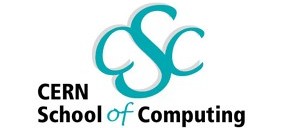|
Students at CSC2010
The following people have attended the 2010 CERN School of
Computing
|
Andres ABAD RODRIGUEZ |
CERN, Geneva - Switzerland |
|
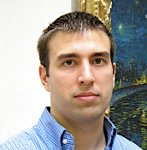
|
When I arrived at CERN in 2007, I worked during a year in the control system
group of IT in the Gas Control System for the LHC. Since September 2007, I
am working for the European project ETICS. It provides a system for the
configuration, building, testing and integration of software. We have a web
interface and a command line client from where our users, like Glite, can
manage their configurations, submit builds and tests and get their results
(binaries and reports) in a repository. We have introduced recently the
possibility of send multinode tests. Inside the team, I am responsible for
some modules of our web application (Java/J2EE and AJAX with GWT), the
webservices (AXIS) and the database (MySQL).
|
|
|
|
|
András AGÓCS |
MTA KFKI-RMKI, Budapest - Hungary |
|
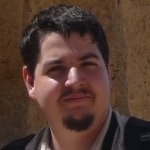 |
I am currently working on my PhD in particle physics as a member of the
Budapest ALICE Group. Besides working on p+p analysis I am also involved in
the development of the VHMPID detector to be installed in ALICE. I am using
a Linux-based environment with Root and AliRoot to simulate events and
analyse LHC data.
|
|
| |
|
Muhammad AHMAD |
National Centre for Physics, Islamabad - Pakistan |
|
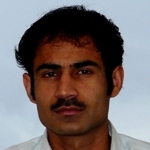 |
I am working in National Centre for Physics in Islamabad and doing my PhD
from Quaid-i-Azam University, Islamabad. I have visited CERN in 2008-2009
for commissioning of Endcap-RPC of CMS detector and responsible for High
Voltage system of RPCs. Now I am working with Quarkonium group for
measurement for Psi (2s) production cross-section at CMS. We are going to
use ratio of Psi(2s) to Jpsi cross section as it reduces the dependence of
our result on systematics. I have used CMSSW, PAT and ROOT for my analysis.
I am familiar with C++ and Python language.
|
|
|
|
|
Eduardo ALVAREZ FERNANDEZ |
CERN, Geneva - Switzerland |
|
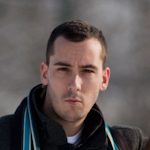 |
I have been working at CERN in IT-OIS Group since 2008, managing the CERN
Central Search service (http:\\search.cern.ch). The aim of this project is
to provide a CERN-wide search engine solution.
Actually we provide search services
for Cern Intranet WebPages, Phonebook and for other areas like Indico
documents and CDS documents. Specific
Solution was developed and integrated in CERN Twiki System to improve its
search relevance for Public pages and also to allow searching in the
Protected Pages (ALICE, ATLAS, CMS, LHCb, ...).
Some of the technologies and programming languages I use in my work
are Fast ESP, Perl, Python, ASP.NET, Javascript and C#. I also feel
comfortable working with C/C++, Java and web technologies.
|
|
|
|
|
Rahul ARORA |
GSI, Darmstadt - Germany |
|
 |
I am presently working as MC-PAD early stage researcher at GSI Darmstadt. I
have also applied at the J.W.Goethe University of Frankfurt for my enrolment
into the graduate school. I am working in the Detector Laboratory on GEM-TPC
project. We are building a prototype TPC (Time Projection Chamber) detector
with GEM readout for PANDA experiment at FAIR.I am basically involved in the
characterization measurements of the various components. I have tested the
GEM foils for leakage current, sparks etc for long term stability. I have
also worked on the detector readout consists of an ASIC chip built in our
lab called n-XYTER (neutron-X, Y, Time, Energy, and Readout). The
preliminary results of the chip are promising. I have tested the chip with a
built on silicon strip detector (50 micron) with Am140 source and results
are satisfactory in terms of response and noise. Presently, I am working on
the gluing of GEMs and fabrication of Field Cage for the TPC.I will now
going to start the simulations on the geometry of field cage and other
particular problems like Ion feedback suppression from the GEMs etc. I have
worked with Linux and windows OS.I have also worked on Geant 4.9.0.
|
|
|
|
|
Valerica BABAN |
University of Bucharest - Romania |
|
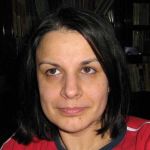 |
I am currently working at my PhD thesis at the Faculty of Physics,
University of Bucharest. My research interests are focused on developing and
using simulation codes to investigate the dynamics of the relativistic
nuclear collisions. I am particularly interested in scientific computing
with respect of modelling and simulation. I am familiar with Linux (SL ,
Debian, Fedora ) and Windows . I use C++, Java, FORTRAN, PHP, MySQL .
Although initially I graduated the Faculty of Physics I have also a MSc in
Mathematics and Computer Science. I have previously worked as Java Progammer
and Cisco CNNA instructor.
|
|
|
|
|
Imon BANERJEE |
National Institute of Technology, Durgapur - India |
|
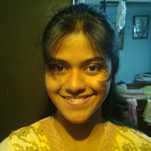 |
My current project work is about distributed system and e-learning. My area
of interest is Distributed System and networking. Two of my paper was
published in International Conference, one is -"Animesh Dutta, Shrutilipi
Bhattacharjee, Imon Banerjee ‘Formal Design of Teleteaching Interactivity’
International Conference on Recent Trends in Information Telecommunication
and Computing - ITC 2010, Kochi, Kerala, India." and the other is -"Animesh
Dutta, Imon Banerjee, Shrutilipi Bhattacharya, Ranjan Dasgupta, Swapan
Bhattachary, ‘Framework for Domain Analysis of Teleteaching System: A
Semiformal Approach’, SERP'10 - 9th International Conference on Software
Engineering Research and Practice, Worldcomp 2010. Las Vegas, USA.".I am
familiar with Linux, Windows operating system and C, C++, JAVA, ns-2
programming language.
|
|
|
|
|
Zbigniew BARANOWSKI |
CERN, Geneva - Switzerland |
|
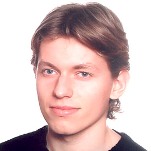 |
Currently I am openlab fellow at CERN in IT Database Group sponsored by the
Oracle. My main tasks are Oracle software testing, administration of
production databases for experiments, development of monitoring tools. Our
databases are running on Red Hat 4 and 5 Enterprise Edition which we have to
administer as well. For development at CERN I am using mainly Python, PHP
and PL/SQL. During studies I developed several projects with C++,C# and
Java.
|
|
|
|
|
Marcin BLASZCZYK |
CERN, Geneva - Switzerland |
|
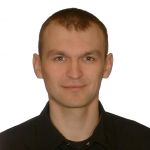 |
I am an Oracle DBA at CERN IT-DB dept. providing support for physics
databases. I am mainly involved in ATLAS databases support including also
consultancy for database applications, performance tuning and Stream
replication. Previously I worked for HP in Warsaw (Poland) for over two
years. My duties/subject of interests are: Oracle databases administration
on Linux/Unix platforms (Red Hat Enterprise Linux, HP-UX, Solaris), Oracle
instance tuning, SQL & PL/SQL tuning, PL/SQL programming, RMAN backup and
recovery, Unix scripting, SAN storage administration. Main Technologies:
Oracle RDBMS, Oracle RAC, ASM, RMAN, Oracle Data Guard, Oracle Streams,
Oracle Enterprise Manager, FC SAN.
|
|
|
|
|
Jakob BLOMER |
CERN, Geneva - Switzerland |
|
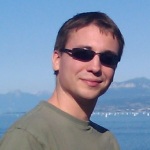 |
I work on the CernVM R&D project in PH-SFT. CernVM provides a portable
environment for development and execution of LHC experiment analysis
software. In particular, I develop the CernVM File System, an HTTP file
system that brings software trees on demand onto virtual machines. As part
of CernVM, I also deal with various aspects of virtualization, including
benchmarks of HEP software in virtualized environments. As part of my
thesis, I work on distributed algorithms in order to build a self-organizing
network of virtual machines out of a plain cluster installation. Currently I
mainly develop system software on Linux using C/C++ and a couple of
scripting languages. I have working knowledge of LateX and Gnuplot.
|
|
|
|
|
Nicola CHIAPOLINI |
Universität Zürich - Switzerland |
|
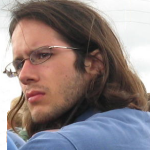 |
I have been working for the TT sub-detector of LHCb during both my Bachelor
and my Master thesis. Since January I am back with my previous group as a
PhD student. At the time of this writing my work concentrates mostly on the
detector alignment.
|
|
|
|
|
Pushpinder Kaur CHOUHAN |
RAL, Didcot – U.K. |
|
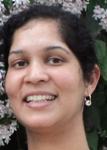 |
I am developing a trading system that provides a portal for end users to
avail and
utilize
the computing power of Grid resources across Grid platforms, including the
gLite Grid middleware and the XtreemOS Linux-based Grid OS. The availability
of these resources to the users will depend on elasticity criteria of
economic versus performance parameters. The objective of my work is to
present a system that facilitates the commercialization of Grid resources
through a Virtual Marketplace of computational resources, where a seller is
capable of listing the Grid resources, and buyer can request/bid dynamically
for required computing resources for their applications. Trading is
performed by means of an auction mechanism. The bid queue is sorted in
decreasing order of price, and the ask queue is sorted in increasing order
of price. A bid/ask remains in the queue until it is allocated, removed due
to its expiration time or removed by the submitted user. This model exploits
the benefits of Grid computing, especially the inter-operability and
scalability of Grid platforms. Interoperability is achieved by using the OGF
SAGA standard on XtreemOS and gLite. OS: Windows and Linux PL: Java, C++, C
|
|
|
|
|
Christopher COWDEN |
University of Cambridge – U.K. |
|
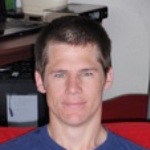 |
CI
am currently working on physics analysis in the Atlas experimental
collaboration. My studies include data driven background estimation
techniques for use in searches for new physics such as supersymmetry, and
separately a measurement of the top quark mass in the dileptonic decay
channel of top pair events. I am familiar with working in the Linux
environment both the Scientific Linux CERN distributions as well as Redhat
Fedora distributions. I am comfortably familiar with the C++ programming
language, and I am also quite familiar with the python scripting language. I
use the bash shell environment for scripting as well.
|
|
|
|
|
